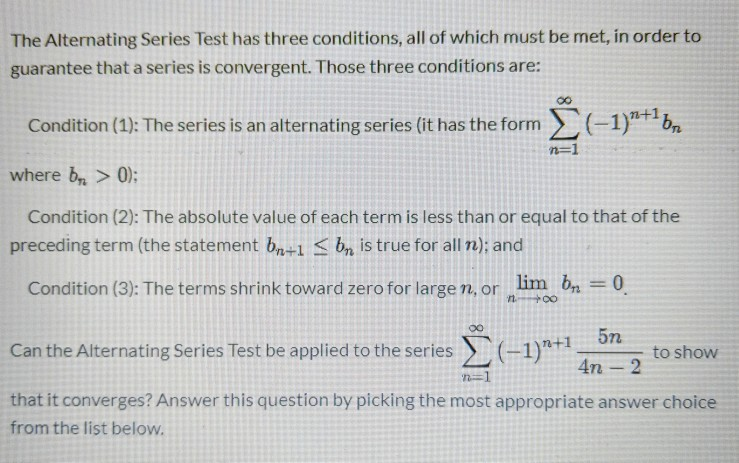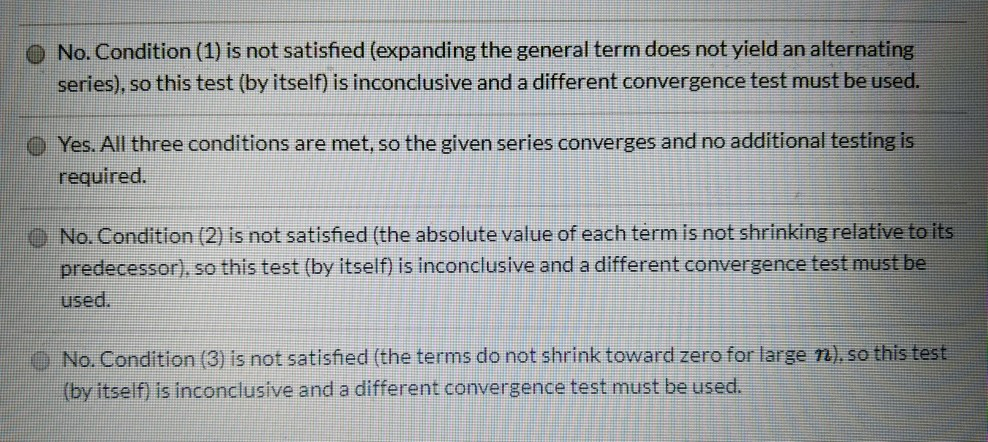QQuestionBiology
QuestionBiology
The Alternating Series Test has three conditions, all of which must be met, in order to guarantee that a series is convergent. Those three conditions are:
Condition (1): The series is an alternating series (it has the form $\sum_{n= 1}^{\infty}(- 1)^{n+ 1} b_{n}$ where $b_{n}>0$ );
Condition (2): The absolute value of each term is less than or equal to that of the preceding term (the statement $b_{n+ 1} \leq b_{n}$ is true for all $n$ ); and
Condition (3): The terms shrink toward zero for large $n$, or $\lim _{n \rightarrow \infty} b_{n}= 0$.
Can the Alternating Series Test be applied to the series $\sum_{n= 1}^{\infty}(- 1)^{n+ 1} \frac{5 n}{4 n- 2}$ to show that it converges? Answer this question by picking the most appropriate answer choice from the list below.
(3) No. Condition (1) is not satisfied (expanding the general term does not yield an alternating series), so this test (by itself) is inconclusive and a different convergence test must be used.
(4) Yes. All three conditions are met, so the given series converges and no additional testing is required.
(5) No. Condition (2) is not satisfied (the absolute value of each term is not shrinking relative to its predecessor), so this test (by itself) is inconclusive and a different convergence test must be used.
(6) No. Condition (3) is not satisfied (the terms do not shrink toward zero for large $\boldsymbol{\tau}$ ), so this test (by itself) is inconclusive and a different convergence test must be used.
Attachments


6 months agoReport content
Answer
Full Solution Locked
Sign in to view the complete step-by-step solution and unlock all study resources.
Step 1: Examine Condition 1 - Alternating Series
In this case, $(-1)^{n+1}$ ensures that the sign alternates, so Condition 1 is satisfied.
Step 2: Examine Condition 2 - Absolute Value of Each Term
Since this inequality does not hold for all $n$, Condition 2 is not satisfied.
We need to verify that the absolute value of each term is less than or equal to that of the preceding term. Let's calculate the absolute values of two consecutive terms: Now, compare the two expressions:
Final Answer
No, the Alternating Series Test cannot be applied to the series $\sum_{n= 1}^{\infty}(- 1)^{n+ 1} \frac{5 n}{4 n- 2}$ to show that it converges, because Condition 2 and Condition 3 are not satisfied. A different convergence test must be used.
Need Help with Homework?
Stuck on a difficult problem? We've got you covered:
- Post your question or upload an image
- Get instant step-by-step solutions
- Learn from our AI and community of students